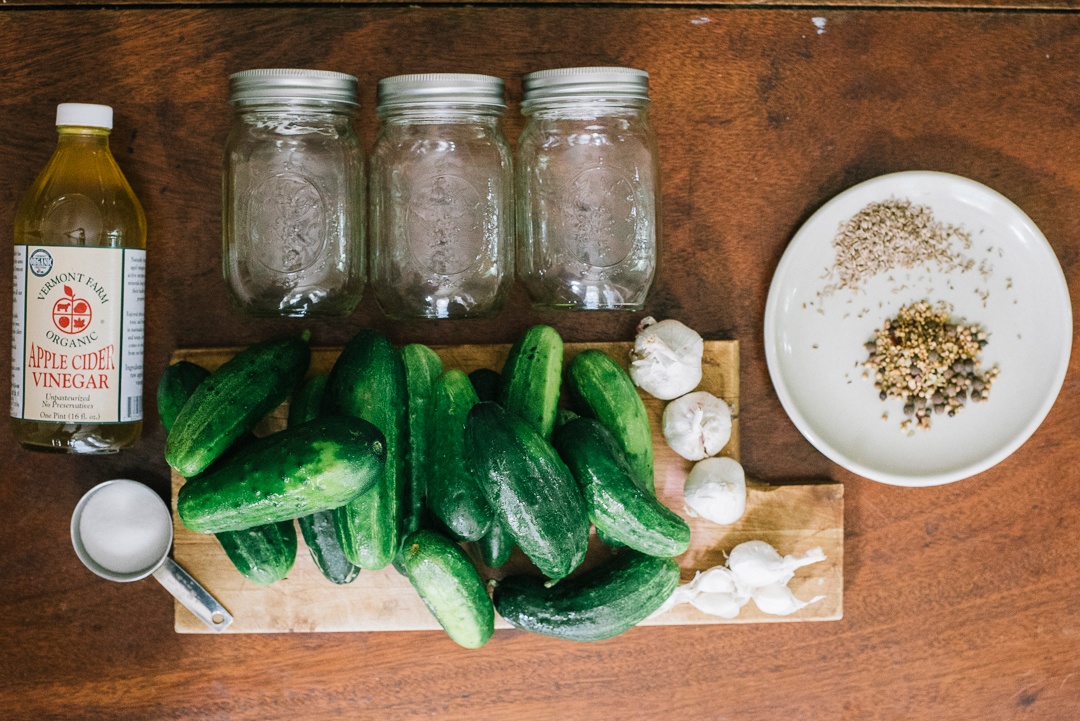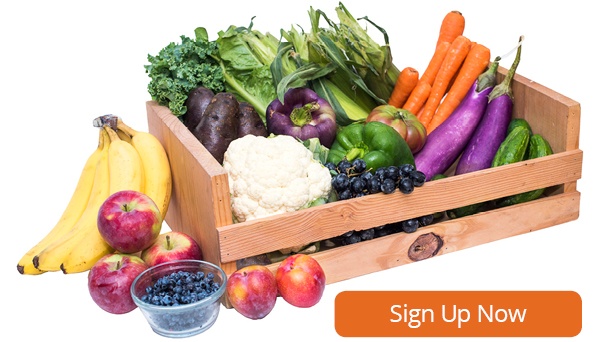Summer may be almost over which means soon our summer favorites like fresh tomatoes, summer squash, eggplant, peppers and more will give way to the fall classics like carrots, radishes, winter squash and lots of hardy greens. But that doesn't mean we have to say goodbye to summer flavors. Check out our tips for freezing, quick pickling and canning to help savor the taste of summer for months to come!

Freezing is a great way to preserve the taste of tender vegetables and fruits. High quality, fresh vegetables and fruits can be frozen to save for later use. Here are a few quick freezing tips:
- For foods with high moisture content when raw (cucumbers, watermelon, oranges, tomatoes, etc), they won’t maintain their crispness after freezing and thawing. For these fruits and vegetables, if you plan to freeze them, they are best used when cooked or blended after thawing.
- Tomatoes – slice, dice or crush before freezing and use in soups, stews and sauces once thawed.
- Kale, Collards, Chard and other hardy, leafy greens – chop and blanch greens before freezing. Blanched then frozen greens will be good for up to 8-12 months.
- Peaches and Nectarines – slice and dry pack peaches or nectarines before freezing.
- Corn – for longer storage, blanch corn on or off the cob before freezing.
- Berries – to freeze whole berries, first lay out in a single layer on a baking sheet and keep in the freezer until solid. Transfer to an airtight container or freezer bag and store in the freezer until ready to use.
- *For strawberries, remove the stems before freezing whole. You can also slice strawberries before freezing. When slicing, simply place in freezer container immediately after slicing and store in the freezer.
- Zucchini and Summer Squash – slice, chop or gate, blanch and then freeze.
- Hardy Fresh Herbs (rosemary, dill, thyme, bay leaves, sage) – keep herbs on the stem, lay in a single layer on a baking sheet and place in the freezer. Once frozen, transfer to an airtight container or freezer bag and keep frozen until ready to use.
- Tender Herbs (basil, cilantro, parsley) – tender herbs are best when frozen after processing. Chop herbs and mix with olive oil and freeze in ice cube trays.
- For more herb saving tips, check out 10 Easy Ways to Preserve Herbs
- Asparagus, peppers, broccoli, brussel sprouts, carrots, cauliflower, eggplant, green beans, okra, mushrooms, turnips, peas, and parsnips – these vegetables can all be frozen after chopping and blanching.
Quick pickling is another great preservation technique that doesn’t require as much time or labor as full on canning. A quick pickle typically involves vinegar, water, salt and sometimes a little bit of sugar to create a pickling liquid. The pickling brine has a pH of 4.6 or below which is able to kill most bacteria and preserve otherwise perishable foods for months.

Just like freezing, pickling works best with super fresh, high quality vegetables. Cucumbers, summer squash, zucchini, carrots, green beans, onions, peppers, beets, cherry/grape tomatoes, garlic scapes, and ginger are all great candidates for quick pickling.
Thinly slice vegetables like cucumbers, onions, peppers, summer squash, ginger, radishes and beets before pickling. Cucumbers and carrots are great when cut into spears before pickling while green beans and garlic scapes can simply be trimmed to fit in the jars.
When selecting a vinegar for pickling, any basic vinegar is a good choice. White, apple, white wine and rice vinegar are good options to form the base of your brine. Then select your spices to add flavor to your quickles. Fresh herbs, dried herbs, garlic, ginger, and ground or whole spices can all be added to your pickling liquid to enhance the flavor of your pickles.
From here, you’re ready to pickle!
Step 1: Wash your jars and dry completely
Step 2: Wash, dry and cut vegetables to desired size and shape
Step 3: Place your selected seasonings (herbs, garlic, spices) into the jars
Step 4: Add your prepared vegetables to the jars. Pack tightly leaving ½ inch of space between the rim of the jar and the tops of the vegetables.
Step 5: Bring your vinegar, water, salt and sugar to a boil in a saucepan. Stir until sugar and salt dissolve. Pour the brine into the jars.
Step 6: Tap the side of the jars to remove any air bubbles, place the lids over the jars and screw shut.
Step 7: Let the jars cool at room temperature. Once cooled, store your pickle jars in the fridge for at least 48 hours before using.
Quick pickled vegetables can be stored in the fridge for up to 2 months.
For canning tips, check out our Pro Canning Tips for Preserving Summer Flavor from last year!



